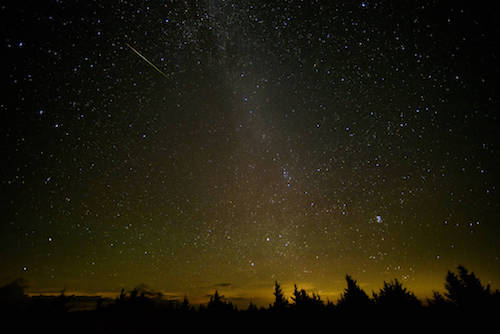 Intelligent Design
Intelligent Design
 Physics, Earth & Space
Physics, Earth & Space
New Research Finds Two Trillion Galaxies

New research demonstrates that the previous estimate for the number of galaxies was too low — by a factor of 10.
In fact, there are two trillion galaxies in the observable universe. That’s 200 galaxies per person on earth, notes Forbes. Impressive — but there’s more.
How did scientists come up with this new, astronomical number? Scientists determine distance of galaxies by calculating red shift. Distance is measured by the time it takes for light to reach an observer — on the cosmological scale, this is years. Then, once researchers know the distance a galaxy is from earth in light-years, they know how far back in time they are looking — sometimes billions of years. Christopher Conselice of the University of Nottingham, UK, and a group of other scientists turned Hubble telescope pictures into 3-D shapes and used new mathematical models:
Conselice and his team reached this conclusion using deep-space images from Hubble and the already published data from other teams. They painstakingly converted the images into 3-D, in order to make accurate measurements of the number of galaxies at different epochs in the universe’s history. In addition, they used new mathematical models, which allowed them to infer the existence of galaxies that the current generation of telescopes cannot observe. This led to the surprising conclusion that in order for the numbers of galaxies we now see and their masses to add up, there must be a further 90 percent of galaxies in the observable universe that are too faint and too far away to be seen with present-day telescopes. These myriad small faint galaxies from the early universe merged over time into the larger galaxies we can now observe.
Now consider, not one of these myriad galaxies would exist without the fantastically precise cosmological fine-tuning that Jay Richards, CSC Senior Fellow and co-author of The Privileged Planet, describes:
(1) Gravitational force constant (large scale attractive force, holds people on planets, and holds planets, stars, and galaxies together) — too weak, and planets and stars cannot form; too strong, and stars burn up too quickly.
(2) Electromagnetic force constant (small scale attractive and repulsive force, holds atoms electrons and atomic nuclei together) — If it were much stronger or weaker, we wouldn’t have stable chemical bonds.
(3) Strong nuclear force constant (small-scale attractive force, holds nuclei of atoms together, which otherwise repulse each other because of the electromagnetic force) — if it were weaker, the universe would have far fewer stable chemical elements, eliminating several that are essential to life.
(4) Weak nuclear force constant (governs radioactive decay) — if it were much stronger or weaker, life-essential stars could not form. (These are the four “fundamental forces.”)
(5) Cosmological constant (which controls the expansion speed of the universe) refers to the balance of the attractive force of gravity with a hypothesized repulsive force of space observable only at very large size scales. It must be very close to zero, that is, these two forces must be nearly perfectly balanced. To get the right balance, the cosmological constant must be fine-tuned to something like 1 part in 10120. If it were just slightly more positive, the universe would fly apart; slightly negative, and the universe would collapse
If all that’s not sufficiently jaw-dropping, add it to that you’re standing here, on one planet, in one solar system, in the Milky Way — one of two trillion galaxies. That’s pretty special, too.
Photo credit: NASA/Bill Ingalls.
